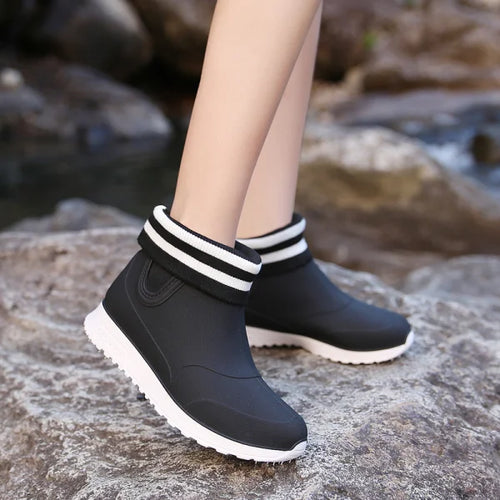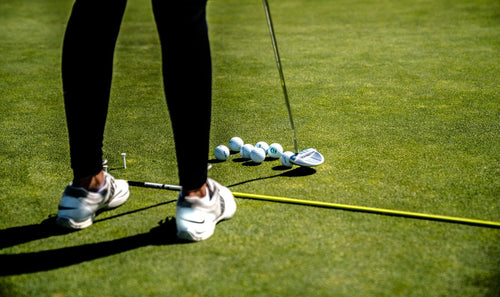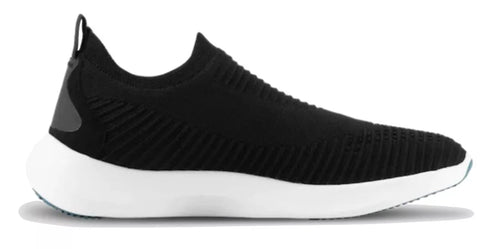Being on one’s feet for long hours at a time can make one reconsider shoe preferences. Gone would be the need for a fashionable pair of heels or the new, suede moccasins. You would be willing to give up all your style just to find comfortable work shoes, wouldn’t you?
Well, what if we told you that there might be no need for that? What if you could have the cake and eat it too?
What are Insoles?
Also known as foot orthosis, inner soul, or shoe insert, the insole is an add-on sole made of supportive material. Insoles provide maximum comfort while walking or running.
Many professionals, such as surgeons, who have to constantly be on their feet, find extreme comfort in using insoles. From friction burns and blisters to muscle contractures: nothing quite hinders your performance like the sheer inability to go on. Literally!

The use of insoles leads to better functionality when it comes to such jobs. Understandably so, since walking around for hours is a lot easier if your feet aren’t killing you.
Some shoes like Loom waterproof sneakers come with comfortable insoles and don’t need an auxiliary one. However, not all shoes may be comfortable enough to be good on their own.

Common Myths and Facts About Insoles
Although many people could do with the comfort of wearing insoles, they are not as widely used as their efficacy might suggest. There are many common ideas and misconceptions associated with this. We are here to demystify the notions around insoles for you.
After all, everyone deserves comfortable work shoes.
1. When Can You Wear Insoles?
Myth:
Only people with medically diagnosed conditions can wear insoles.
Fact:
Although certain medical conditions require the use of insoles, they are not an absolute prerequisite. Anyone can wear insoles!
Plantar fasciitis, arthritis, iliotibial band friction syndrome, runner’s knee, and jumper’s knee are the common medical conditions in which insoles are recommended. Moreover, insoles are also used by patients developing a diabetic foot.
However, you need not have a medical issue to invest in your comfort. Many people use insoles as a preventive measure, staving off muscle and tendon contractures. Others simply wear them for the comfort they provide.
Insoles prevent undue stress from straining your muscles and tendons. They also facilitate weight distribution between your lower back, pelvis, and feet. This saves you from knee and back pain due to overwork and exhaustion.
Whether it is work that requires you to be up and about all the time, or you have a long day of shopping ahead, insoles are your friend in need. Want to wear those high heels but afraid to end up walking like a lamb because of the pain? Insoles all the way!
2. Do You Need a Prescription to Wear Insoles?
Myth:
One can only get insoles made upon recommendation by a podiatrist or orthopedist.
Fact:
Although you can consult a physician so that they can guide you better, it is not necessary.
Insoles can be custom-made or available over the counter. Most people who resort to custom-made insoles do so on the advice of their doctors. This ensures that the sole perfectly meets their needs and provides maximum relief.

If you are simply looking for some arch support for your day-to-day comfort, you can try out any ready-made insoles that best suit your liking. Alternatively, in case you are unable to find the right fit, you can get one custom designed for your need. Although consulting a podiatrist first would help you make the right adjustments, you are free to decide what you need on your own.
Finding comfortable work shoes is a difficult task. All the parameters never seem to fit quite right. However, by getting yourself the right insoles, you can get the required comfort from almost any shoe.
3. Can One Insole Satisfy Different Requirements?
Myth:
You just need one insole made that will work for all your shoes.
Fact:
You require specific insoles for different types of shoes and activities.
Insoles are made from all sorts of supportive materials. Each is useful for a certain shoe style and the extent of the activity you might need to perform. Here are some examples with their pros and cons.
● High Arch Insoles
High arch insoles, as the name suggests, provide support to the arches of your feet. Some people have very high arches, and they come with certain problems. The best solution is to support them adequately to prevent pain and stress.

● Heavy Duty Insoles
Heavy-duty insoles include leather and air-cushioned insoles among others. They need to be made from tough, strong material and also include thick padding. Heavy-duty insoles are mostly used by people doing construction or factory work.
● Insulating Insoles
Insulating insoles are a lifesaver in cold weather. In addition to steadying you, they also help regulate your temperature. They are made from a thick, insulating material, mainly wool. However, foam insoles may also serve this purpose.
● Cushioned Insoles
Cushioned insoles serve the function of shock absorption. Runners and joggers mainly prefer these insoles. They include foam, memory foam, and gel insoles. Although they reduce the impact of high-intensity movements, it is important to note that they are not ideal in terms of arch support.
● Moldable Insoles
Moldable insoles are designed to immediately conform to the shape of your foot, automatically adjusting to any problem areas. They are heated in the oven for a short time to make them moldable. Then you stand on them to get them to adjust to your foot shape.
● High Heel Insoles
High heel insoles provide support when wearing heels. They are usually gel insoles, with the main focus on protecting the balls of your feet from the brunt of your weight. They also provide better grip and prevent slipping.
● Ready-Made Insoles
Regular over-the-counter insoles do not target any specific issue. They provide general comfort and are often used to make larger shoe sizes fit properly.
● Children’s Insoles
Children’s insoles are difficult to engineer. As their feet are constantly growing, care must be taken to ensure that there is no stunting effect.
4. What Is the Lifetime of One Pair of Insoles?
Myth:
Insoles can last for years at a time, and need not be replaced like shoes.
Fact:
Insoles undergo wear and tear with use, and need to be replaced regularly. However, they may last the lifetime of two pairs of shoes.

Although insoles might last longer than your shoes, they need replacing sooner or later. This also depends on the frequency and type of activity you perform. The wear-and-tear usually begins from the area under the balls of your feet.
Next, friction over other weight-bearing areas of your sole causes the insole to become ineffective. As it cannot fulfill its main function to provide support, it is time to invest in a new pair.
5. When Can You Stop Wearing Insoles?
Myth:
You can wear insoles for a specific healing or recovery period only.
Fact:
Ideally, you can wear insoles on a lifelong basis. There are absolutely no negative consequences to this.
Once people get into the habit of wearing insoles, it is too comfortable to give up. Moreover, there is no rule saying that insoles are a temporary comfort in times of discomfort only. You can wear them regularly to maintain good posture and stability.
However, if you find you can adjust to wearing insoles, it is also alright to use them for temporary relief only. At the end of the day, it is your comfort that matters.
The Benefits of Wearing Insoles
Now that we have clarified basic misconceptions, it is important to note the general benefits of wearing insoles.
- They support your spine and prevent back pain.
- They increase stability.
- Your legs and feet do not get fatigued easily.
- They prevent blisters and sores on your feet from long days.
- Your shoes fit better with insoles.
- You can turn any shoes into comfortable work shoes with the help of insoles.
If you are planning a trip that will take you through rough terrains or a long day at the mall, or if you simply want your feet to be more comfortable as you go about your day, insoles are the way to go.
Also read: What Shoes Are Best For Skateboarding? Reviews & Top 8 List
Caring for Your Insoles
Taking proper care of your insoles makes them last longer. In addition to this, it also increases the life of your shoes.
It is important to regularly air them out. Regular use might make them sweaty and they may trap moisture. Remember to wash them regularly with any available detergent and air-dry them before use again.
The Bottomline
If you are someone who has to be on their feet all day long, comfortable work shoes are nothing short of a necessity and a basic right. However, they are not easy to find.
Moreover, insoles will improve the quality of your workday, as they help take the focus off your aching feet and redirect it to the task at hand.
We hope this article helped clear up the major ideas around the use of insoles. Remember: your comfort comes first!
You may also like: Arch support shoes for hair dressers

























